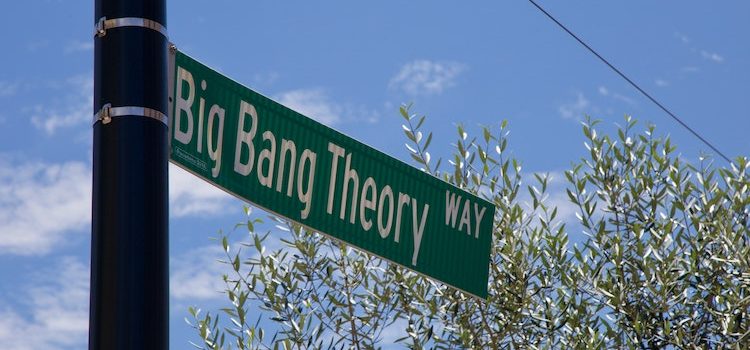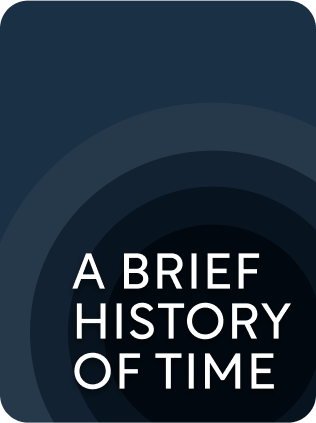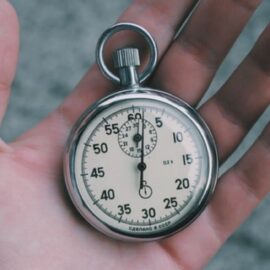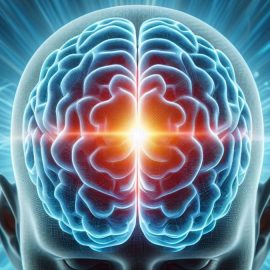

This article is an excerpt from the Shortform book guide to "A Brief History of Time" by Stephen Hawking. Shortform has the world's best summaries and analyses of books you should be reading.
Like this article? Sign up for a free trial here .
How did the universe begin? What’s the evidence for the big bang?
In the twentieth century, new scientific discoveries challenged the theory that the universe had always existed. Based on these discoveries, the “big bang” theory ultimately replaced the old model. In A Brief History of Time, physicist Stephen Hawking discusses the theory, the evidence for it, and its philosophical and theological implications.
Keep reading for Hawking’s discussion of how the universe began.
How Did the Universe Begin?
Hawking points out that the origins of the universe have profound implications. He contrasts the Judeo-Christian belief that God created the universe with the atheistic view that many scientists held in the nineteenth century, namely that the universe was infinite and had always existed. Since the universe had always existed, there was no need for a divine creator to bring it into existence. Hawking refers to this view as the “static universe model.”
Hawking recounts that, in the twentieth century, new scientific discoveries challenged the prevailing theory on how the universe began—specifically that the universe had always existed. Based on these discoveries, the “big bang” theory ultimately replaced the static universe model. The big bang theory posits that the universe is expanding outward from a point where it came into existence at a finite time in the past.
The big bang theory presented two significant philosophical problems for Hawking and other atheist scientists. First, the idea that the universe had a beginning seemed uncomfortably similar to the Judeo-Christian concept of creation. Second, the theory arguably implied that the universe was fine-tuned for humankind, because the big bang model was extremely sensitive to initial conditions, such as its expansion velocity and the distribution of matter. If any of these initial parameters had been even slightly different, the universe would not have been able to support human life. However, Hawking argues that these problems can be addressed by considering the implications of quantum mechanics.
We’ll first review the discoveries that led to the development of the big bang theory, as Hawking presents them. Then, in the next chapter, we’ll discuss the issue of fine-tuning and the quantum approach that Hawking proposes to remove the fine-tuning requirement.
| Contrasting Religious Perspectives on the Big Bang As we discussed, Hawking saw a similarity between the big bang theory and the Judeo-Christian idea of creation, and he found this similarity concerning because he was an atheist. Some atheists share Hawking’s concerns about the big bang theory, but others do not. A common perspective among atheists is that the big bang theory is an atheistic creation story. They see no reason to assume that the big bang singularity required God to create it or set it in motion. Instead, they point out that every society develops some kind of explanation for the origins of the world, and argue that the big bang theory is the most scientifically defensible origin story yet. A similar difference of opinion exists among creationists. The Catholic Church endorsed the big bang theory as being consistent with the biblical creation. In fact, in the 1920s, a Catholic priest by the name of Father Lemaitre (who also had a background in astronomy) was arguably the first real proponent of the big bang theory. Some protestants also endorsed the big bang, but many rejected it as an atheistic creation story. This was largely due to the popularity of Ussher’s chronology, which taught that God created the earth (and presumably the whole universe) in the year 4004 BC. Proponents of Ussher’s chronology rejected the big bang theory because it implied that the universe was billions of years old instead of a few thousand years old. |
Evidence for the Big Bang
The primary piece of evidence that led to the development of the big bang was the discovery that the universe is expanding. Hawking notes that astronomer Edwin Hubble made this discovery in the 1920s, when he measured the distance to a number of galaxies and found that they were all moving away. Furthermore, the galaxies that were farther away were moving away faster.
Hubble’s Red-Shift Measurements
Hawking explains Hubble’s method of distance measurement, which led to his discovery that the other galaxies were moving away.
Specifically, as Hawking explains, astronomers can measure distances to nearby stars directly, but these methods don’t work for objects that are too far away, such as distant galaxies. However, a light source of a given brightness appears dimmer the farther away it is, so if you know its actual brightness, you can calculate how far away it is by measuring its apparent brightness.
Hawking describes how Hubble was able to estimate the absolute brightness of distant stars by assuming they would give off about the same amount of light as nearby stars that had the same composition. He knew the absolute brightness of the nearby stars because the distance to them had already been measured directly, and he could analyze the composition of a star by passing its light through a prism.
As Hawking explains, when starlight is passed through a prism, it produces an “absorption spectrum” consisting of a pattern of light and dark bands. Dark bands at certain frequencies indicate the presence of certain elements.
Hawking relates how, as Hubble was taking his measurements, he noticed that the characteristic absorption bands of elements in the distant stars were uniformly shifted toward the red (lower-frequency) end of the spectrum.
Hawking goes on to explain that this “red-shift” is produced by the doppler effect: When a source of waves (such as light or sound) is moving relative to the observer, the waves that are going in the same direction get compressed and the waves going in the opposite direction get stretched. This makes the frequency of the waves higher in front of the source and lower behind it. Thus, light from an object that is moving away from you shows a frequency shift toward the red end of the spectrum, and the amount the frequency shifts is proportional to the speed of the object.
Hawking notes that when Hubble took his measurements, he was able to determine both the distance to stars in distant galaxies and their speed relative to earth, because their absorption spectra showed him both their composition (from which he could estimate absolute brightness) and the red-shift, which allowed him to calculate how fast they were moving away from earth.
Hawking recounts that based on Hubble’s measurements, practically all other galaxies were moving away from our own, and the further away they were, the faster they were moving away. Hubble concluded that if other galaxies are all moving away from us, the universe must be expanding.
| Methods of Measuring Astronomical Distances Hubble’s distance measurements relied on knowing the distance to relatively close-by stars, so he could determine their absolute brightness and compare it to the brightness of similar stars in distant galaxies. How did astronomers measure the distance to these nearby stars in the first place? The answer is triangulation. If you have a triangle, and you know the length of one side and two of the angles, you can calculate the third angle and the length of the other two sides. Astronomers use the diameter of Earth’s orbit as the base of a triangle. They measure the angular position of a star very precisely. Then they wait exactly half a year and take the same measurements again. This gives them the two angles that they need and thus, combined with the diameter of Earth’s orbit, allows them to calculate the distance to the star. Sometimes the triangulation method is also referred to as the “parallax” method because of the way astronomers measure the angles. If you take a picture of an object from two different positions, the position of the object in the picture will shift slightly, relative to other objects that are closer to you or further away. This relative shift in position due to the change in angle is called “parallax.” Astronomers measure the angle by measuring the parallax. Double-Checking Hubble’s Measurements With Binary Stars More recently, astronomers have developed another way of determining the distance to distant galaxies. This provides a second check on Hubble’s method. It only works with binary stars whose orbits are aligned so that, from our vantage point, they pass in front of each other. By observing these “eclipsing binary stars,” astronomers can determine how fast they orbit each other. With this information, they can use general relativity to calculate the mass and absolute luminosity of the stars. Then they can compare this to the stars’ observed brightness to determine how far away they are, just as Hubble did. The binary star method corroborates Hubble’s method, because it provides another way to estimate stars’ absolute brightness, independent of looking at their composition. |
Theoretical Support
Hawking points out that, in hindsight, Hubble’s discovery that the universe is expanding could have been predicted based on general relativity, or even Newtonian mechanics. In fact, Hawking relates that Russian physicist Alexander Friedmann did use general relativity to accurately predict Hubble’s discovery a few years prior to it.
Hawking explains that if the universe was not expanding, then gravity would eventually cause it to collapse in on itself. Thus, scientists as far back as Newton should have known all along that the universe was not static or eternal, but rather it must be either expanding or contracting.
(Shortform note: Historically, scientists justified a static universe model based on gravitational equilibrium. The universe didn’t have to expand or contract because every galaxy was being pulled in every direction equally by the gravity of other galaxies. This, in turn, was because the distribution of matter in the universe was uniform on a large scale, and the universe was infinite in size.)
Hawking recounts how Einstein recognized this when he was developing his theory of general relativity, but at the time, the static universe model was so entrenched in the scientific community that Einstein introduced a hypothetical constant into his equations to cancel out the expansion that his theory predicted. He called this fudge factor the “cosmological constant.” Later, when Hubble’s observations confirmed that the universe actually was expanding, Einstein publicly admitted that introducing this hypothetical constant was a mistake.
(Shortform note: Ironically, scientists have recently reintroduced Einstein’s cosmological constant into the theory of general relativity, but with a different value, so that it accelerates the expansion of the universe instead of canceling it out. They’ve done this to explain new observations. Specifically, new measurements indicate that after the big bang, gravity began to slow down the expansion of the universe for a while, but now the expansion rate is speeding up again.)
The Cosmic Microwave Background
As Hawking explains, physics predicts that there was a period of time where the early universe was small, hot, and dense. The discovery of the cosmic microwave background provided direct observational evidence for this.
Specifically, hot objects give off radiation, you can calculate the radiation that an object emits using quantum mechanics. According to Hawking, in the 1960s, physicists Bob Dicke and Jim Peebles calculated that radiation from the early universe should still be detectable. Because of the subsequent expansion of the universe, it would be red-shifted into the microwave range of the electromagnetic spectrum and would be very faint. They also predicted that it should come from every direction uniformly, since, at that time, the matter in the universe was very uniform; stars and other objects hadn’t formed yet.
(Shortform note: Physicists are continuing to refine this theory. Dicke and Peebles originally assumed that this microwave background should be completely uniform, but others eventually pointed out that there should be slight variations, since you need areas of slightly higher density in order for matter to eventually collapse under gravity and form stars and galaxies. These slight variations have since been observed and mapped using satellites. Recently, new measurements showed that the cosmic microwave background is also slightly brighter in one half of the sky than the other. Theorists are still exploring possible explanations for this.)
Hawking also tells how, about the same time that Peebles and Dicke did their calculations, astronomers Arno Penzias and Robert Wilson were trying out a very sensitive microwave antenna when they discovered faint, uniform microwave radiation that seemed to come from every direction. Initially, they thought it was some kind of noise or interference, but after extensive troubleshooting they were able to rule out the possibility that it came from the detector itself or a source inside Earth’s atmosphere.
According to Hawking, Penzias and Wilson eventually connected with Dicke and Peebles and realized that they had been picking up the radiation from the early universe. This radiation was later dubbed the “cosmic microwave background.”
(Shortform note: About the same time that Penzias and Wilson discovered cosmic microwave background radiation, astronomers also discovered a similar background signal in the radio portion of the spectrum. Unlike the microwave background, the radio background is not predicted or explained by the big bang model. Nevertheless, recent measurements have confirmed its existence and revived interest in it. Scientists have not yet determined what causes it.)

———End of Preview———
Like what you just read? Read the rest of the world's best book summary and analysis of Stephen Hawking's "A Brief History of Time" at Shortform .
Here's what you'll find in our full A Brief History of Time summary :
- The search for a theory that explains the history and evolution of our universe
- Stephen Hawking's discussions about time, space, dimensions, and quantum theory
- How time travel would theoretically work






